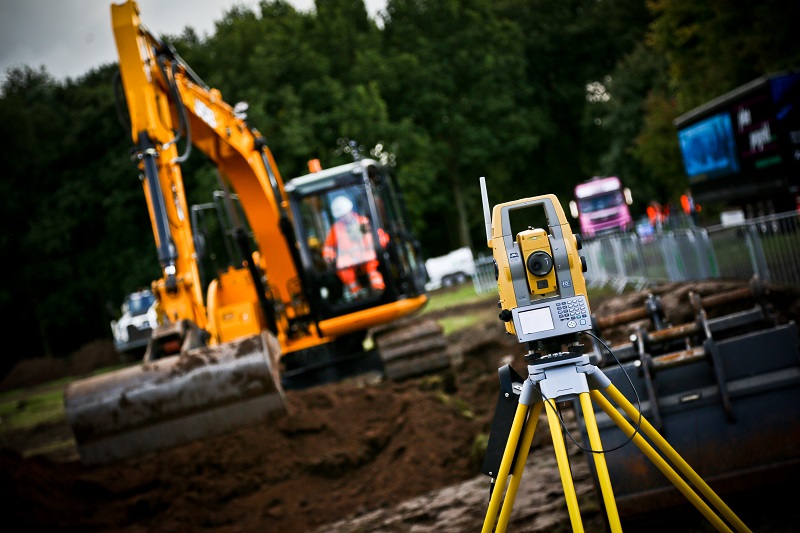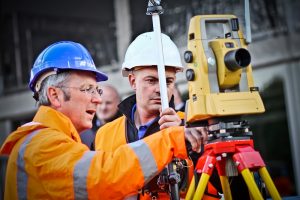
How can contractors put the pedal to the metal in infrastructure projects? Duncan McCormick, construction software sales specialist at Topcon, explains how technology can help
With the UK population projected to rise from 64.6 million in 2014 to more than 74.3 million by 2039, the construction industry needs to ensure the country has effective road and rail infrastructure in place to take the additional load.
54 per cent of the world’s population lives in urban areas, a figure which is set to grow to nearly 70 per cent by 2050 . As a result, the UK’s road and rail networks are under constant pressure from our growing population.
Without work to expand capacity and reduce congestion, the country’s essential infrastructure could grind to a halt, with significant negative implications for the economy.
The Government already has a host of engineering programmes in the pipeline to ensure the UK’s road and rail networks are ready for the population increase expected over the next 25 years.
In London, for example, Crossrail is on track for services to begin in 2018, while in the North of England, a series of targeted rail upgrades called the Northern Hub is under way to strengthen links between the East and West Coast.
Planning applications are also moving forward for improvements to motorways and A-roads across the UK, as part of the Government’s £15 billion Road Investments Plan.
 However, carrying out these infrastructure projects takes money – something the UK Government doesn’t currently have enough of.
However, carrying out these infrastructure projects takes money – something the UK Government doesn’t currently have enough of.
Indeed, according to the Institute of Directors (IoD), the funding gap for the UK’s infrastructure needs, including transport, is predicted to be as high as £500 billion by 2020. Globally, the gap is estimated to reach £24 trillion by 2030.
With resources tight, civil engineers are always looking for new ways of working that improve efficiency and save time and money on these key infrastructure projects.
Positioned for efficiency
Engineers on many key infrastructure projects are already using new technology to boost efficiency and cut the cost of work. Satellite positioning and prism tracking equipment is helping engineers to survey sites before and during construction to help them build more effective road and rail links while also saving time and manpower.
This type of advanced positioning equipment is already having a great impact on some of the UK’s busiest roads. Traffic congestion is a widespread issue across the country, especially in urban settings where populations are rapidly growing, and something that several contractors are tackling in challenging road-upgrade projects.
The intricacy of these projects means that engineers need positioning equipment capable of delivering accurate results on site, quickly and efficiently.
To achieve this balance, one surveying team we work with used Topcon’s LPS Robotic Grader, a prism tracking robotic total station to map the project site with an accuracy of six millimetres.
This precision has enabled them to achieve the tight tolerances required to ensure the new road layout is effective, while also saving on materials, cutting waste and cost.
In addition, as a robotic total station, the LPS Robotic Grader only needs one person to operate it, and allows users to collect points remotely. This helps to reduce the number of workers needed for the project, further saving time and money.
Effective scheduling
However, it is not enough to just have time-saving technology on site during the actual construction phase. Making infrastructure projects more efficient lies in the planning stage, with the scheduling systems used to plot each work phase.
Traditionally, managers working on infrastructure programmes have used scheduling software designed for building construction. These help organisations to schedule many aspects of a project, from the purchasing of materials, to the sourcing of labour and machinery to coincide with the appropriate phase of work.
While these tools help to streamline projects and reduce delays in construction, they are of limited benefit in road and rail engineering, simply because they have not been designed with this work in mind. What is needed are scheduling tools developed specifically for infrastructure.
 DynaRoad from Topcon, for example, is a location-based scheduling software system created especially for earthwork projects, such as road and rail.
DynaRoad from Topcon, for example, is a location-based scheduling software system created especially for earthwork projects, such as road and rail.
As well as enabling managers to devise timings for each phase of construction for each area of the site and take into account the varying speed of works in different locations, it provides automatic mass haul calculation which determines how long each earthwork task will take.
The system is already being used to streamline large infrastructure projects across Europe. Skanska, one of the world’s leading project development and construction groups, recently used the software in its work on the UFP 01 Vestfold railway in southern Norway – a project involving the construction of nine kilometres of track, three tunnels and six bridges between Larvik and Porsgrunn.
DynaRoad was used to improve complex mass haul operations carried out in different phases, helping Skanska to plan for the right machines and equipment and estimate cost.
Using this kind of specialist software, managers can benefit from quick, realistic and accurate scheduling for every aspect of an infrastructure project, from initial excavation, to final completion. It can also help to implement BIM strategies by making it easier for contractors to import data from suppliers into their work schedules.
Using such industry-specific planning tools will become more and more important, helping contractors to achieve the large-scale infrastructure projects needed to help the UK meet future challenges all while cutting costs and saving time.
Building for the future
If the infrastructure sector is to complete the work the UK needs while overcoming the challenge of limited public investment, more must be done to boost efficiency across each stage of a project, from conception, to planning, to construction.
Collaboration between infrastructure professionals and manufacturers has gone a long way towards achieving this efficiency goal.
This close working relationship means that manufacturers are able to design products that meet the unique needs of road and rail projects. By continuing this dialogue, the sector can ensure it continues to have the right tools to meet its needs, helping the UK prepare for the challenges it may face in the future.
For more information visit www.topconpositioning.com








